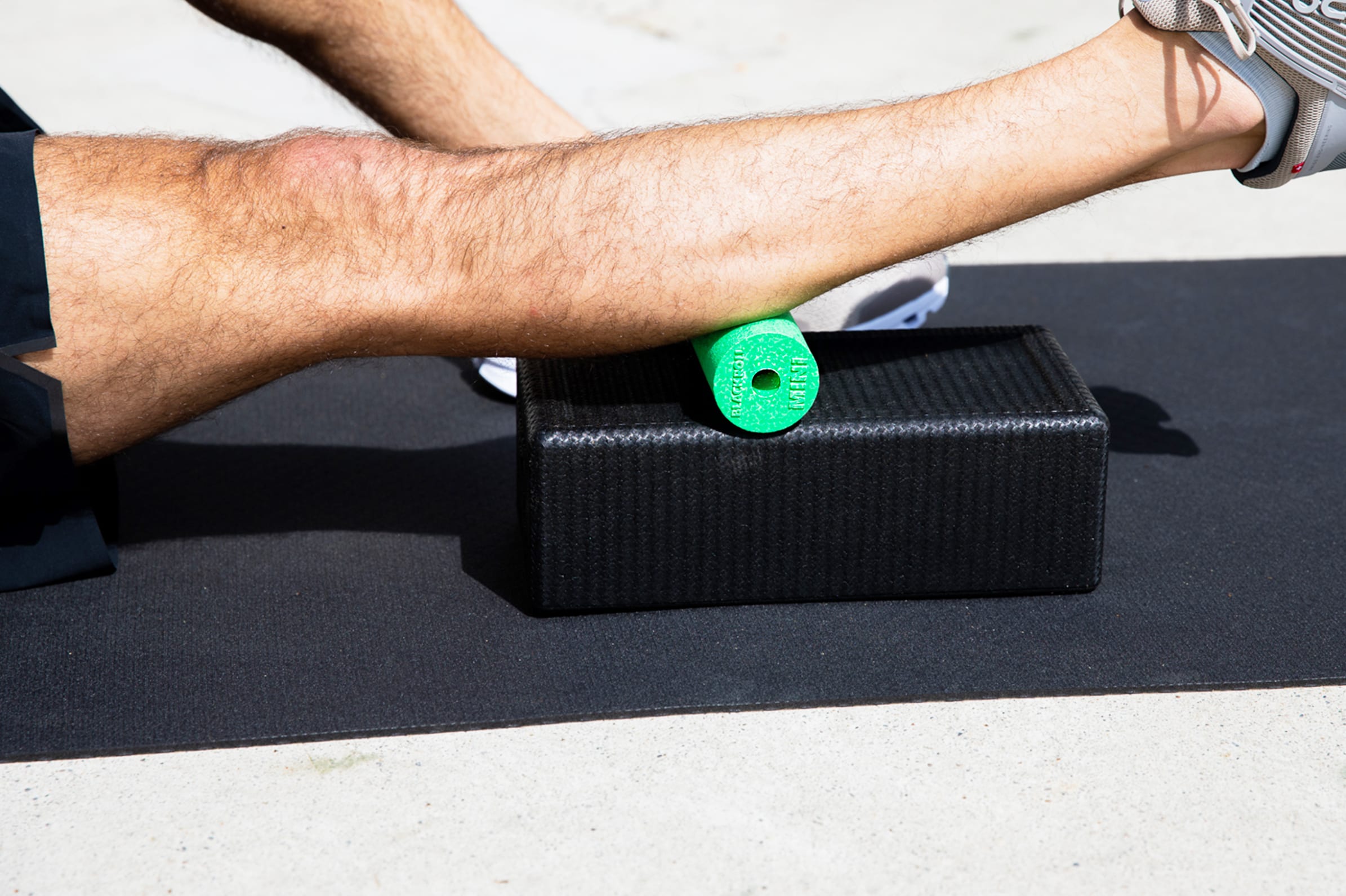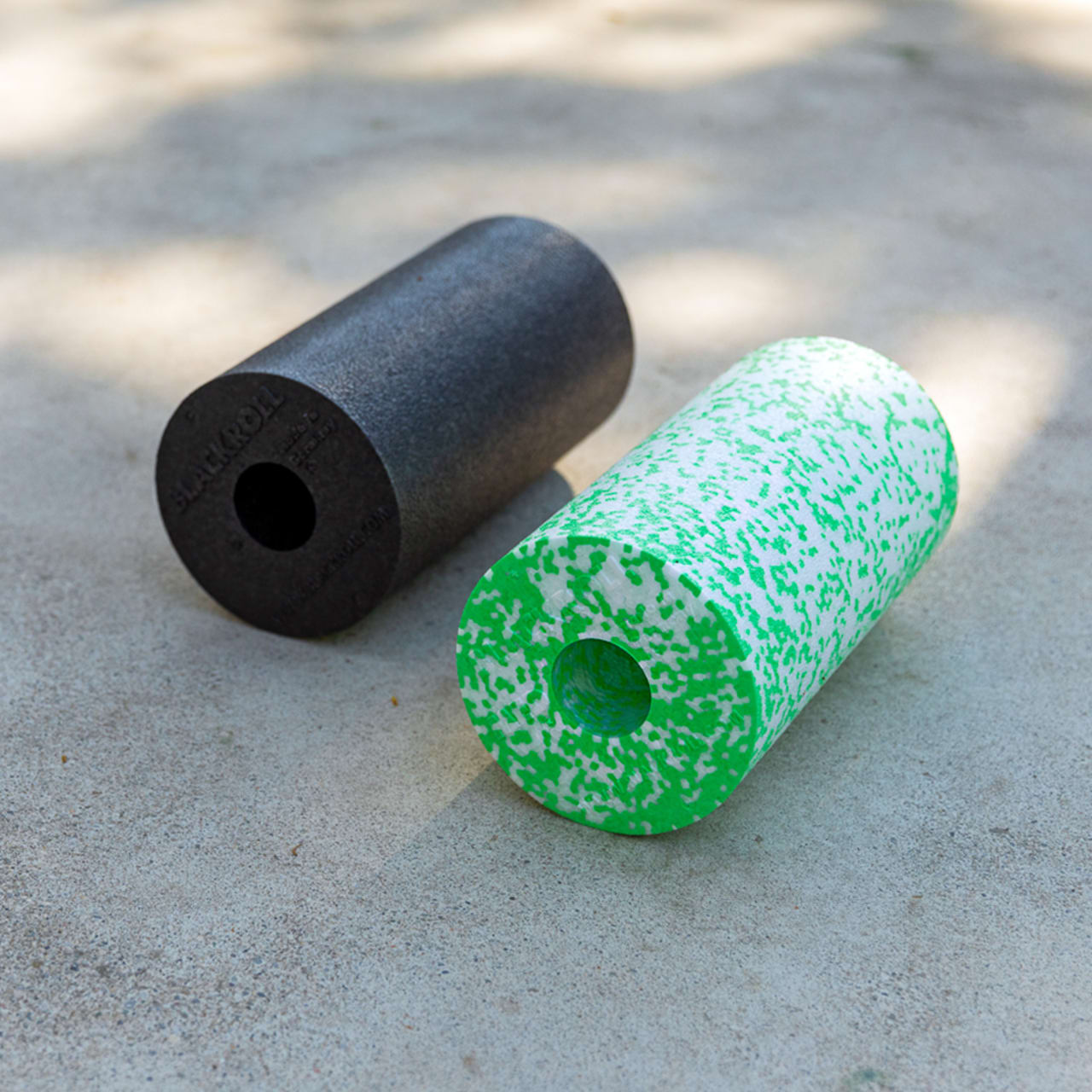
Foam rollers and determining the correct direction

In which direction should the foam roller be rolled.
The question as to the direction in which you should roll during classic training with the foam roller is discussed with increasingly frequency, even in expert circles. Opinions range from “roll in all directions” to “only roll towards the heart”, or “only roll the foam roller in one direction”. So you have performed an Internet search, only to be left none the wiser and uncertain as to how to proceed? We would like to offer you a perspective on the topic of “foam rollers and roll direction” that is as objective as possible, and share our experiences without letting dogma get in the way. Ever since 2007, when the first BLACKROLL® was brought to the market, we have been working with leading fascia researchers, and always keep a close eye on scientific developments. In this article we would like to share our opinion on the topic of direction when performing self-massage with the foam roller.
In order to draw conclusions as to the correct rolling direction, we would like to examine two statements on the matter. Proponents of both of these hypotheses are of the opinion that you should only roll in one direction with the foam roller. How legitimate are these claims?
Statement 1: You should only roll in the direction of vascular flow.
This statement refers primarily to the fascial massage of the legs. It is alleged that excessive rolling in the opposite direction to the venous flaps, that is, away from the heart, can be harmful and may result in varicose veins. However, this hypothesis has not been confirmed by any scientific studies and is based purely on assumption. We work on the assumption that the use of the foam roller in both directions is harmless. Ultimately, fascia training is not performed when static, but rather dynamically, when moving. Therefore, the blood flow is only restricted for a moment. Moreover, numerous performance athletes have been rolling in both directions for years. To date, no athletes have been known to suffer from valvular insufficiency as a result of excessive rolling in both directions.
Statement 2: Bodily fluid should only be pushed in one direction.
One of the most important effects of fascia training is the removal of used fluids and metabolic products. Like a sponge, the used cellular fluid must be squeezed out in order that the fascia can refill with fresh, nutrient-rich fluid. This assertion assumes that rolling back and forth merely distributes the tissue fluid. The argument here is that the lymph flows towards the centre of the body. The problem with this assumption is that 90 percent of the water that we squeeze out (like a sponge) when performing fascia training runs not in the direction of lymph flow, but rather along the veins – that is, in all directions. Leading German fascia researcher, Dr. Robert Schleip, works on the assumption that the rolling direction is then only of importance if there are inflammatory neurotransmitters in the connective tissue and you wish to support the flow of lymph. From this perspective, the treatment of body parts located away from the torso, working towards the centre of the body, makes perfect sense. More on this later.
Who actually says that there are only two rolling directions?
The fact that discussions concerning the rolling direction when training with the foam roller only ever address longitudinal massage is somewhat bewildering. The notion that you can also perform massage working horizontal to the line of the muscle fibres, or indeed using circular motions, is only very seldom considered. At BLACKROLL®, we refer to a total of eight self-massage techniques. This combination of rolling, acupressure and mobilisation techniques remove tension from the fasciae and make the tissue more supple in general.
Conclusion: In which direction should you roll the foam roller?
We like to answer this question by rolling out some pizza dough. When preparing a pizza, we press, knead, pull and roll the dough in all directions. This illustration, albeit somewhat simplistic, can, however, be applied to our fascial tissue. Just like when rolling out a piece of dough, adhesions and hardenings are better eradicated if we roll back and forth over the point in question several times. If you attempt to soften a clump in your pizza dough by rolling in one direction with a rolling pin, it will take longer than if you simply work the dough in all directions. Our fascial network and our veins likewise run in all directions. If you want to eradicate adhesions and promote the removal of used tissue fluid, you should therefore practise fascia massage in multiple directions – forwards, backwards, and side to side.
Based on the bodily systems; the lymph, the veins, and the nerves, it nonetheless makes sense that you work towards the centre of the body. However, we do not do this by rolling in only one direction, but by working the respective body parts with the foam roller, rolling in various directions, from the extremities located far from the torso, in towards the centre of the body. This way you also take into account the fluid transport element.
What is important is that you do not allow your uncertainties regarding direction to taint the positive aspects of training with the foam roller. The effects experienced following a self-massage session speak for themselves.




